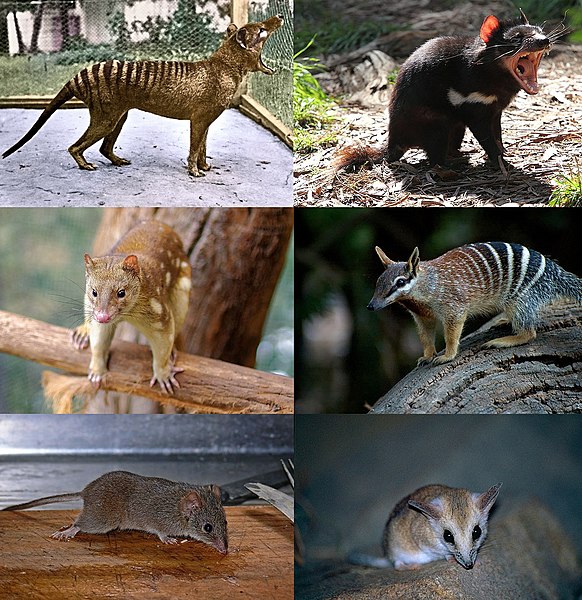The thylacine, also commonly known as the Tasmanian tiger or Tasmanian wolf, is an extinct carnivorous marsupial that was native to the Australian mainland and the islands of Tasmania and New Guinea. The thylacine died out in New Guinea and mainland Australia around 3,600–3,200 years ago, prior to the arrival of Europeans, possibly because of the introduction of the dingo, whose earliest record dates to around the same time, but which never reached Tasmania. Prior to European settlement, around 5,000 remained in the wild on Tasmania. Beginning in the nineteenth century, they were perceived as a threat to the livestock of farmers and bounty hunting was introduced. The last known of its species died in 1936 at Hobart Zoo in Tasmania. The thylacine is widespread in popular culture and is a cultural icon in Australia.
Thylacine
The earliest known non-indigenous illustration of a thylacine; from Harris' 1808 description
Thylacine is a basal member of Dasyuromorphia, an order comprising most of the Australian carnivorous marsupials
The thylacine could open its jaws to an unusual extent: up to 80 degrees.
Extinction is the termination of a taxon by the death of its last member. A taxon may become functionally extinct before the death of its last member if it loses the capacity to reproduce and recover. Because a species' potential range may be very large, determining this moment is difficult, and is usually done retrospectively. This difficulty leads to phenomena such as Lazarus taxa, where a species presumed extinct abruptly "reappears" after a period of apparent absence.
Extinction
The thylacine (Thylacinus cynocephalus) is an example of an extinct species.
External mold of the extinct Lepidodendron from the Upper Carboniferous of Ohio
The dodo of Mauritius, shown here in a 1626 illustration by Roelant Savery, is an often-cited example of modern extinction.








